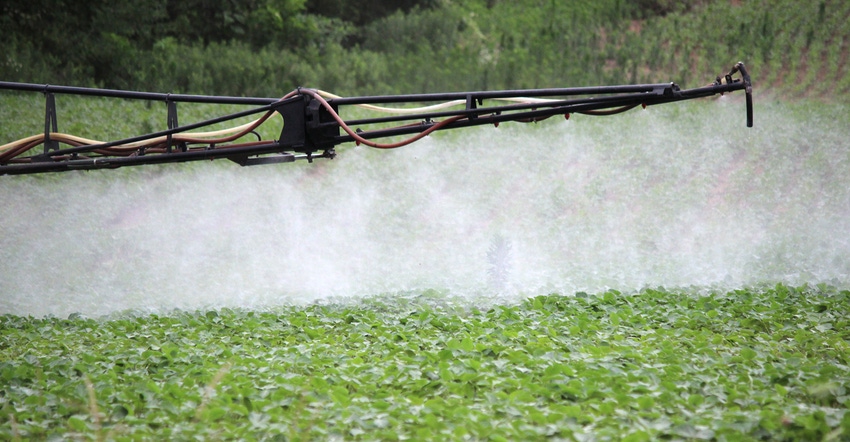
The 2017 application season gave farmers and applicators a crash course on herbicide injury and insurance coverage. Ted Mies, a Waverly, Ill., farmer and crop insurance representative, says dicamba drift is not covered by crop insurance, but any yield loss will not impact the farm’s 10-year actual production history if farmers submit a claim.
“If your beans were hurt by dicamba drift and you turn in a claim to me as the agent, then come fall, if you have 20 bushels per acre instead of 60, it won’t go against APH,” he explains. “It will be blank for that year.”
Crop insurance won’t cover yield loss, but liability insurance may still come into play. If your soybeans are damaged by off-target movement, Dave Brown, Insurance Providers Group, recommends documentation above and beyond the federal label’s record-keeping requirements. Farmers should take several dated photos, diagram the impacted fields, write down observations and conversations regarding the situation, and be prepared to show comparative yield data. Time-stamp records by emailing the photos and notes to yourself for a trackable history.
The labels may not provide clarity for every situation, but Brown says one thing is very clear: “Liability is being put on the applicator. Have very good documentation, and be on the conservative side of things.”
What if an insurance company determines a client applicator followed all the federal label requirements and off-target damage occurred? “Country Mutual’s farm policy will continue to provide coverage to our insureds for a claim made against our insureds for an error in the application of herbicides,” says Chris Coplan, Country Financial. “If our insured has properly applied the herbicide, no payment would be owed by our insured under the liability coverage of our farm policy.”
Ron Nott, vice president of claims at Grinnell Mutual, says if the claims team determines an insured farmer “negligently” damaged neighboring fields, settlements would be made according to the policy terms.
Brown reminds that every situation is unique, with different field configurations, surroundings and weather conditions. And not all application requirements are black-and-white, he adds. Dicamba labels state, “Do not apply this product when the wind is blowing toward adjacent non-dicamba tolerant susceptible crops,” but the labels do not specify how far away the adjacent field must be for an on-label application. The Illinois Department of Agriculture interprets adjacent to mean beyond “side by side” but doesn’t clarify specific distances. For liability claims, the respective insurance company will determine “adjacent” in off-target movement situations.
“This may vary from carrier to carrier, so check with your insurer,” Brown says. “In all claims, companies want to investigate what their clients did, or did not do, which may have caused damage.”
About the Author(s)
You May Also Like




